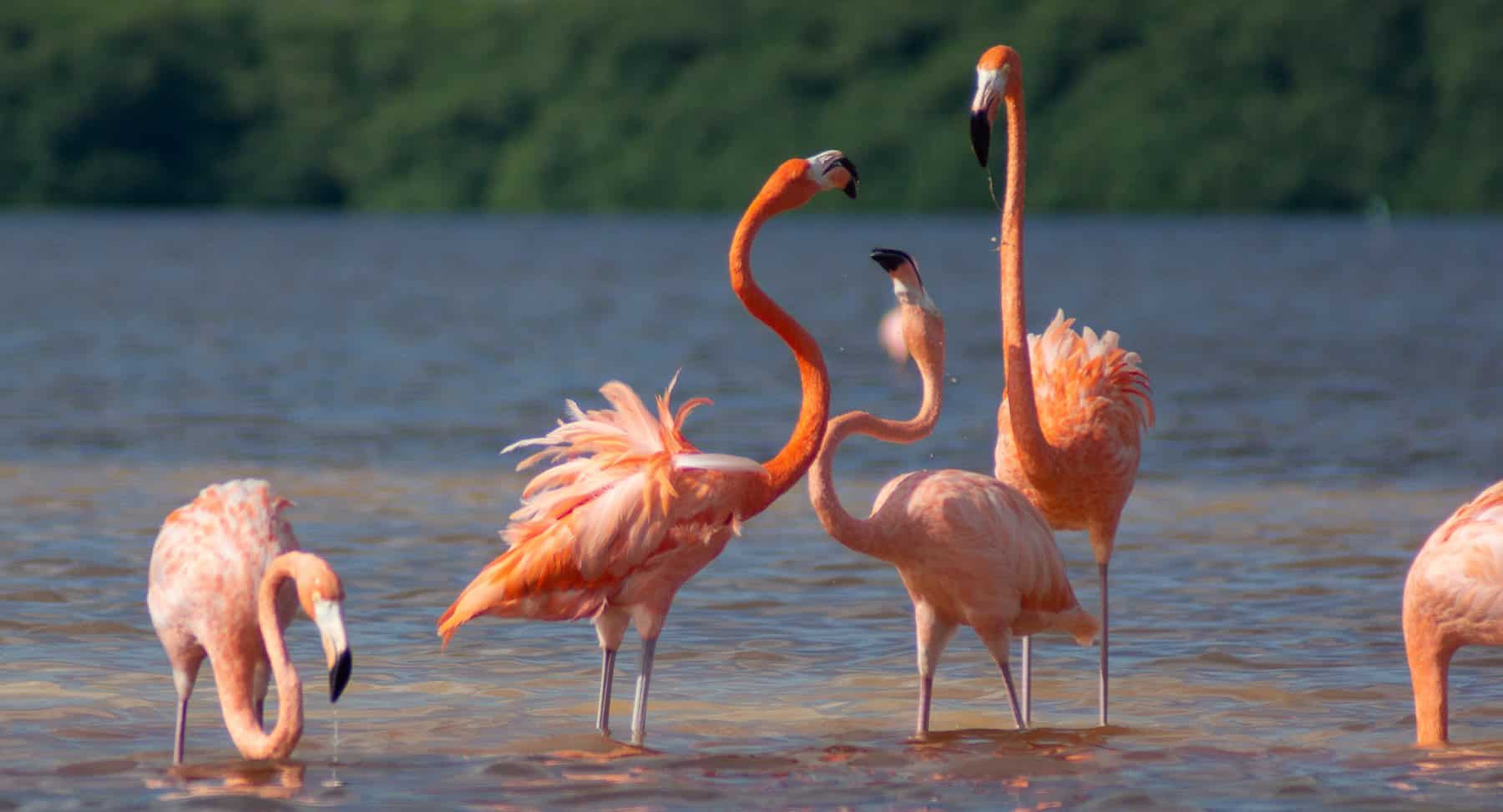Why Are Flamingos in Yucatán Pink?

Flamingos are among the most elegant and iconic birds, and the Yucatán Peninsula is one of the best places to see them in their natural habitat. But have you ever wondered why these beautiful creatures have their signature pink hue? This article dives into the science behind their vibrant color and provides tips on where to spot them in Yucatán for an unforgettable adventure. Here are some tips about the Flamingos in Yucatán.
The Science Behind Flamingos’ Pink Feathers
Flamingos owe their pink coloration to their diet, which is rich in carotenoids. These pigments are found in the small crustaceans, algae, and plankton that flamingos consume in the wild. When digested, these carotenoids are metabolized and deposited in their feathers, skin, and beaks, giving them their striking pink and reddish tones. Interestingly, flamingos are born with gray feathers, which gradually turn pink as they grow and continue to eat carotenoid-rich food.
Where to Find Flamingos in Yucatán
The Yucatán Peninsula is home to several hotspots where flamingos gather in large colonies, creating breathtaking spectacles for nature enthusiasts:
- Celestún Biosphere Reserve: Located on the Gulf of Mexico, this is one of the most famous places to see flamingos. From November to March, thousands of flamingos gather here, painting the landscape in hues of pink.
- Ría Lagartos Biosphere Reserve: Situated on the peninsula’s northern coast, this area is another prime spot for flamingo sightings, especially during their breeding season from April to June.
- Las Coloradas: Known for its pink salt lakes, this destination offers a double dose of vibrant hues with flamingos often seen feeding in the nearby waters.
The Experience of Seeing Flamingos
Witnessing flamingos in their natural habitat is an unforgettable experience. These elegant birds move in synchronized flocks, their pink feathers creating a vivid contrast against the turquoise waters and blue skies. Whether you’re photographing them or simply enjoying the serene atmosphere, flamingo-watching is a must-do activity in Yucatán.
Tips for Planning Your Adventure
- Best Time to Visit: Plan your trip between November and March for peak flamingo viewing in Celestún or between April and June for the Ría Lagartos breeding season.
- Join a Guided Tour: Local guides provide valuable insights about flamingos and the surrounding ecosystems, ensuring a richer experience.
- Bring Binoculars and Cameras: To observe the birds up close without disturbing them and capture their beauty.
- Respect Their Habitat: Maintain a safe distance to protect the birds and their nesting areas.
More Than Just Birds
A trip to see flamingos is not just about the birds. Yucatán’s biosphere reserves and lagoons are teeming with wildlife, including other exotic bird species, crocodiles, and stunning flora. Plus, these areas are surrounded by charming towns where you can enjoy local cuisine, such as fresh seafood in Celestún or authentic Yucatecan dishes in nearby villages.
Flamingos in Yucatán. Plan your Adventure
Flamingos are not just a symbol of Yucatán’s natural beauty—they are a testament to the region’s rich biodiversity. Understanding why they are pink adds a fascinating layer to their allure, and seeing them in their natural habitats is a memory you’ll cherish forever. Make sure to add a flamingo adventure to your Yucatán itinerary and experience this extraordinary spectacle for yourself.
